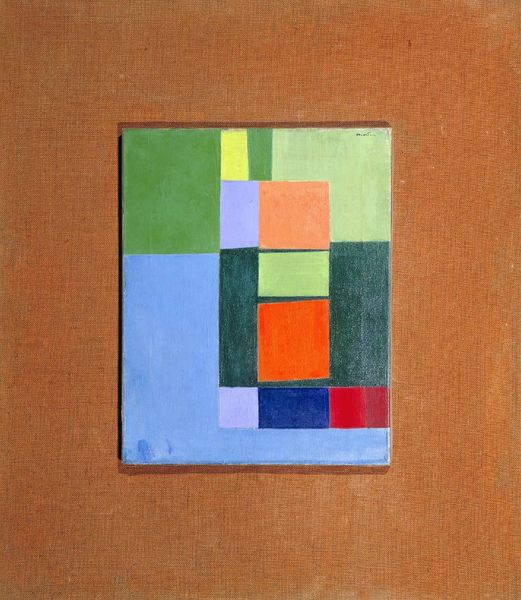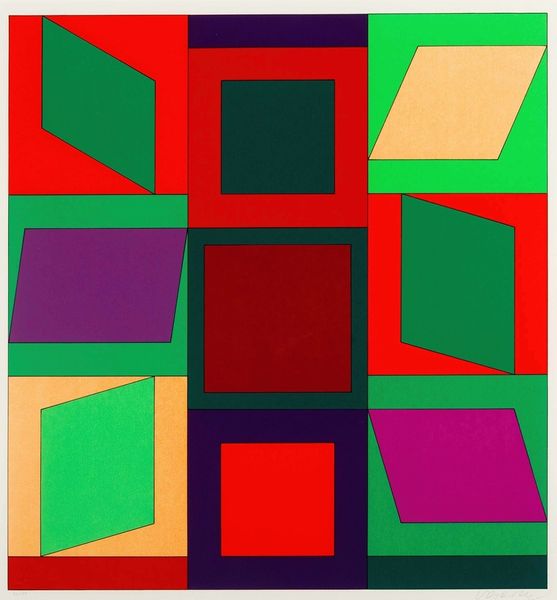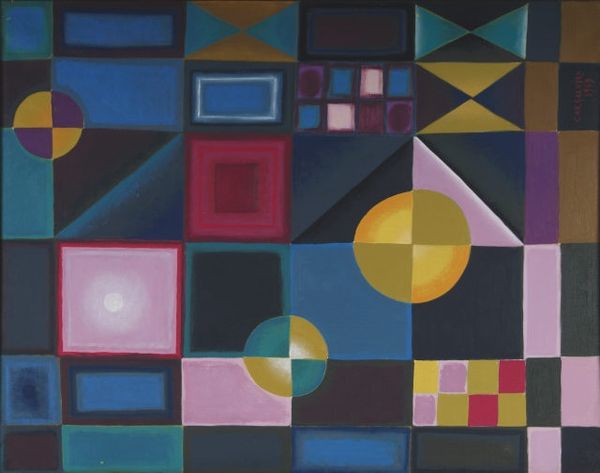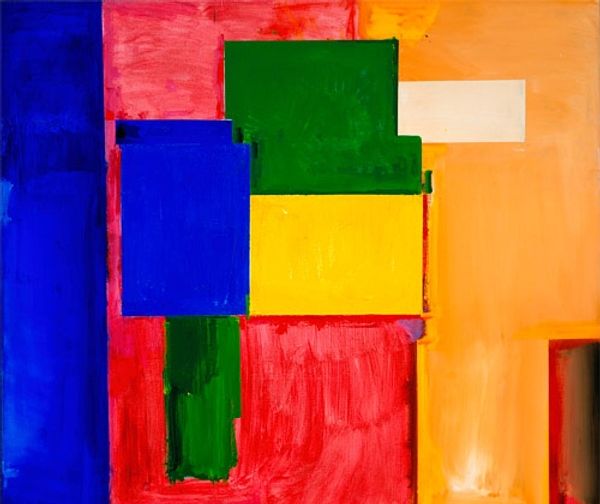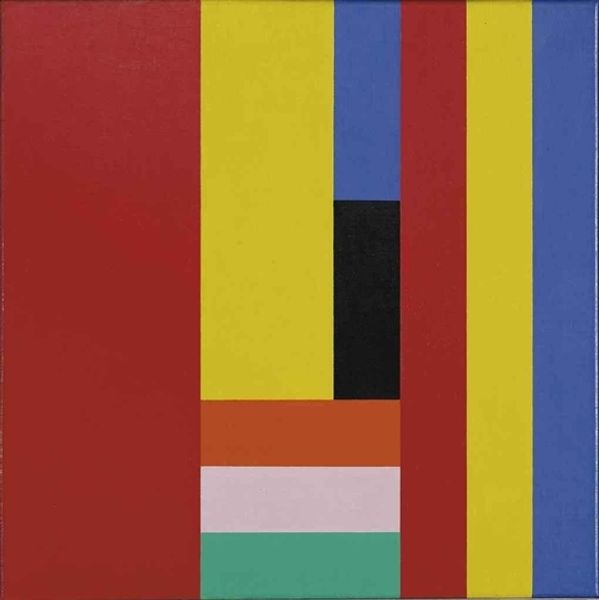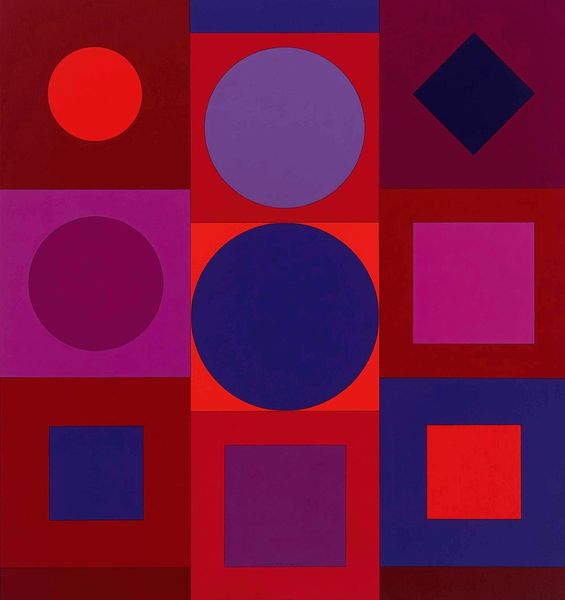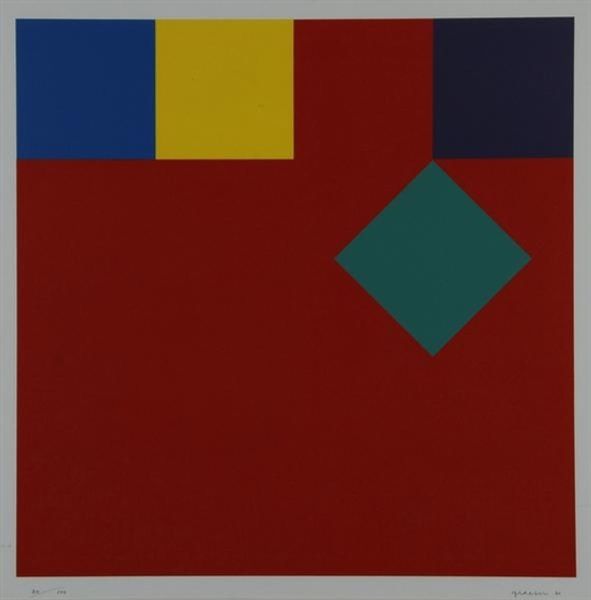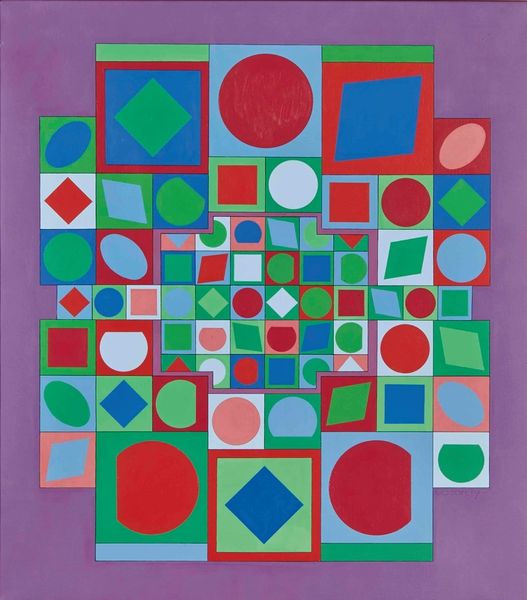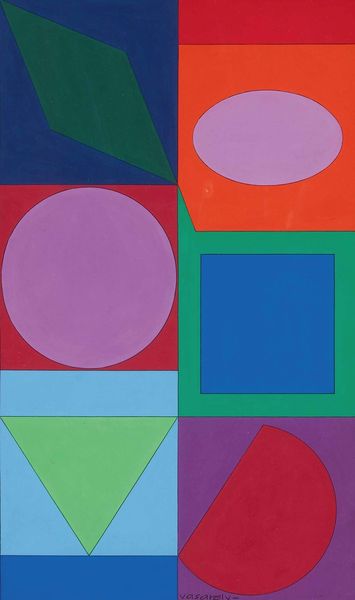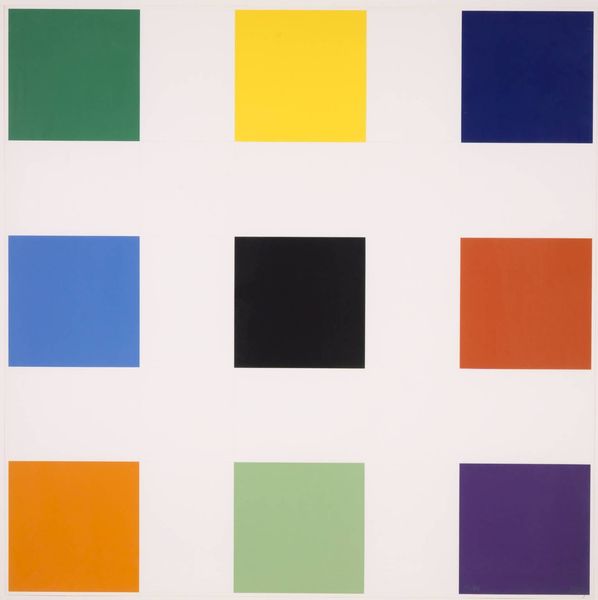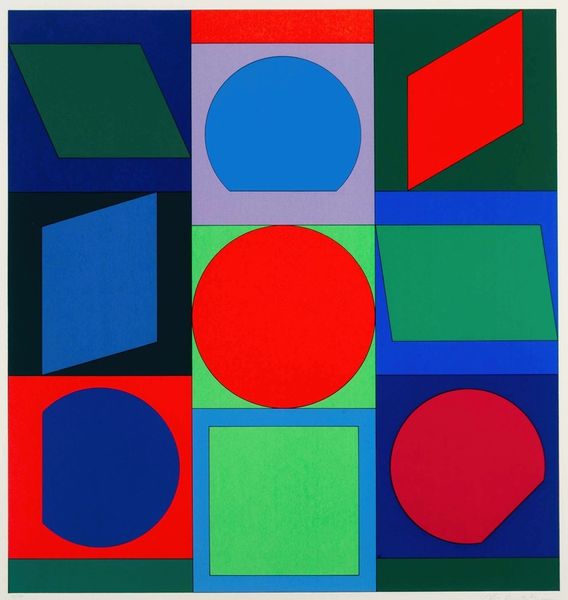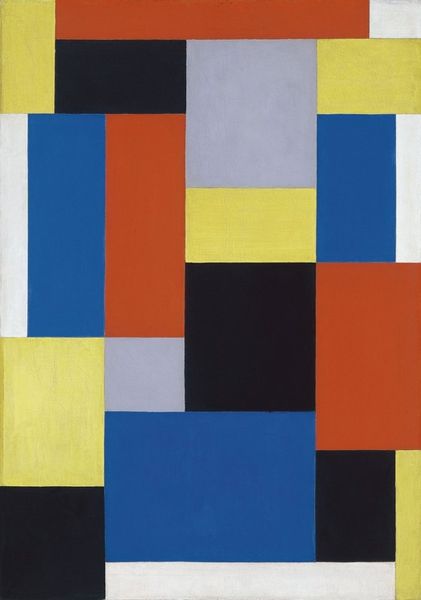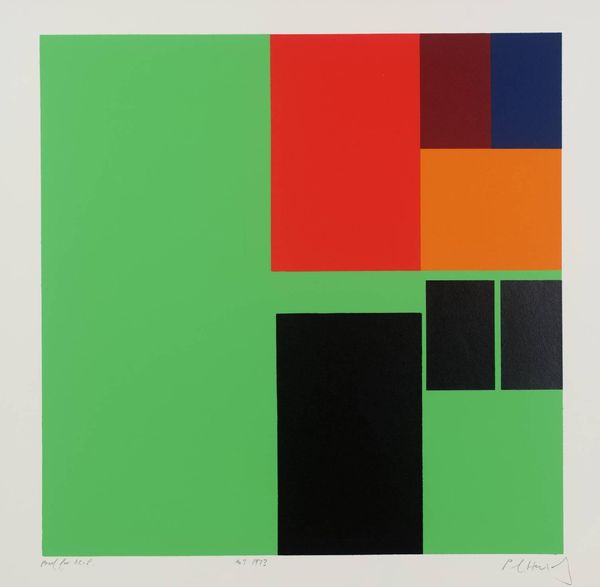
painting, acrylic-paint
#
abstract-expressionism
#
de-stijl
#
abstract expressionism
#
non-objective-art
#
painting
#
pattern
#
pop art
#
acrylic-paint
#
form
#
geometric pattern
#
geometric
#
geometric-abstraction
#
line
#
modernism
Copyright: Verena Loewensberg,Fair Use
Curator: What catches my eye immediately is the playful arrangement—all these colored squares and rectangles feel almost like someone tossed a handful of sweets onto a canvas! Editor: You’ve put it perfectly! Verena Loewensberg's “Untitled,” from 1949, definitely radiates a sense of optimistic geometry. It is oil on canvas, and features vibrant blocks of color against what appears to be a cool, dark backdrop. This artwork feels like a visual manifesto of post-war artistic experimentation. Curator: Experimentation indeed! Each shape seems to vibrate against its neighbor, almost like little arguments on the canvas. Is this harmonious tension on purpose, I wonder? It teeters between total balance and delightful discord. Editor: The tension you observe fits squarely within the historical context. Loewensberg was a key figure in the Zurich Concrete art movement, which championed non-objective art as a utopian ideal. After witnessing so much political strife, many artists felt they had to produce forms which would elicit reason rather than chaos, which they thought abstract shapes and pure colors could elicit best. Curator: So it’s about creating order from chaos through sheer willpower, shaping a visual playground with rules only understood by the artist—I’d like to have that kind of command! Though those orderly colors don't feel coolly rational at all. To me they spark pure emotion, as if a soul expressed itself through pattern and light. It dances before your eyes... Editor: Precisely, the deceptive simplicity in her work reveals complex underlying ideas regarding universal languages within art, and, through their careful engagement with international movements like De Stijl and concrete art, they really wanted to create the possibilities for what such new idioms could allow within postwar Europe. What Loewensberg adds to it however is the vibrancy, which many find optimistic still today! Curator: Yes! To create art as hopeful artifact, or some way out of social difficulty? Wonderful. The idea makes the squares light up even brighter somehow. I can hear it already, these optimistic color arrangements whispering in our ears! Editor: An incredibly insightful idea to leave us with when contemplating such artworks and historical movements that had at their heart some type of utopia building. Thank you!
Comments
No comments
Be the first to comment and join the conversation on the ultimate creative platform.
